
Amazon will let you pay with a wave of your hand at all Whole Foods stores
Amazon is bringing its Amazon One palm recognition system to all of its more than 500 Whole Foods stores by the end of the year.
2023-07-21 00:56

Ukraine grain deal: What has happened to food prices since it ended?
World wheat prices have soared since Russia refused to renew the Ukraine grain deal.
2023-07-20 18:23

Fast grocery firms doomed by French dark store ban
Hampered by hostile new regulations, firms that promised instant grocery deliveries are leaving France.
2023-07-20 00:23
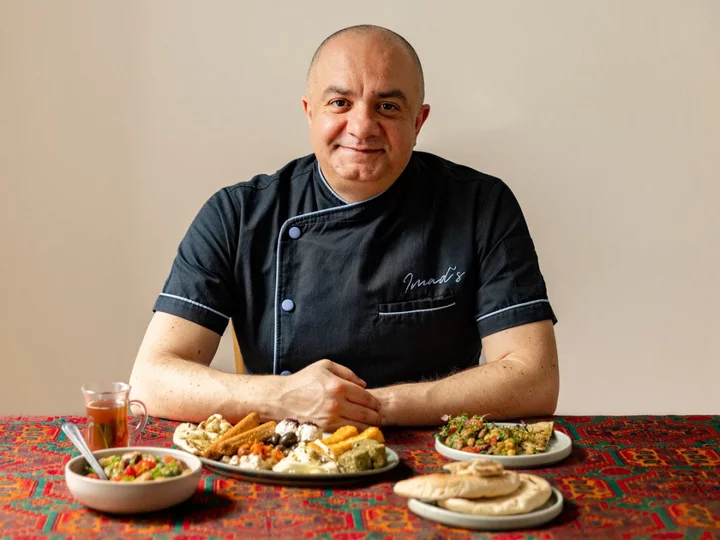
Imad Alarnab: In The Jungle, food restored our faith
Food can bring people comfort in the darkest times, and for Imad Alarnab, this time came when he was stranded as a refugee in Calais for more than two months. A hot plate had been donated, people collected leftovers from supermarkets, and having been a successful chef back in Damascus – with three restaurants, and a string of cafes and juice bars – Alarnab did what he did best, night after night, he cooked. “It was just something I felt like I needed to do, because you get to make a lot of people happy. Especially at that time, they needed something to be happy about,” says the 45-year-old, who would feed as many as 400 people at a time. The overcrowded camp that became known as The Jungle was close by, but Alarnab says it was too terrifying and overcrowded, so he and a group of several other Syrians slept on the steps of a church instead. And it was here he cooked the food of home – adapted, of course, depending on what they had. “To have a decent warm meal – for people whose lives have been on hold, they can’t cross to safety – was a big deal for all of us,” says the father-of-three. In fact, it was the first time he’d cooked for lots of people since all of his businesses were bombed within a week in 2012, in the country’s civil war, and this was the moment hope returned. “I think it restored all of the faith that things could, and would, get better,” Alarnab writes in his debut cookbook, Imad’s Syrian Kitchen. By July 2015, he’d made the painful decision to leave his wife and three daughters in Damascus to make the treacherous journey via Lebanon, Greece and North Macedonia, to the UK, where they had relatives. With his children too young to make the journey, the family planned to join once he’d been granted asylum. “If I had any other choice, I would have definitely taken it. [Fleeing] wasn’t the easiest but it was somehow the safest,” he says. “When I was in Syria during the war, people were saying, ‘It’s not safe to go out of the house because maybe you’re going to die’. But I needed to feed my family, if I stayed in the house they would die from hunger. There’s no good choice or bad choice, but maybe it’s the only one you can make. “When I was leaving Damascus, my oldest daughter made me promise I would see her within one year. I said, ‘Yes, I promise,’ but I wasn’t really sure if I was going to keep that promise or not.” And during the three months before he reached the UK – walking hundreds of miles on foot, on train, in the back of cars, on push bike, at the mercy of smugglers, with false IDs and the kindness of strangers – there were moments of doubt, like when he was crammed in the back of a lorry in Turkey for seven hours. “There were about 95 of us, I felt it was a stupid decision, risking my life so much. I believe the driver was so scared, or maybe drunk – the speed was absolutely scary. I thought we were not going to make it.” His journey ended eventually by using a fake passport to cross the Channel in October 2015 (the moving, often harrowing, story is weaved through his new cookbook), and first finding work illegally in a car wash, where he also slept as an overnight security guard, sending money home. After his family were able to emigrate (just under the year he’d promised his daughter) someone introduced him to the Cook For Syria scheme – and soon he was hosting super clubs at his house. By May 2021, he’d opened his London restaurant, Imad’s Syrian Kitchen. His first cookbook is a combination of dishes served up at the restaurant and his late mother’s recipes. “Almost every single dish is somehow related to my mother – I keep seeking her approval in everything I do in life, but especially with cooking,” he says. It was his mum, Summer, who first taught him to cook. “Even if you create your own recipes, somehow you will [always] be inspired by your first teacher”. She died very suddenly while Alarnab was living alone in a caravan in west London. Syrian food at its heart is “simple, first of all, and affordable for everyone”, he says. “We use a lot of mild spices, not very hot spices.” They’re mostly things you’ll know; “cumin, mint, garlic, nothing really special about it. [but] you put it together in a special way”. Middle Eastern in identity, much of it might feel familiar; tabbouleh, hummus, baklawa; while traditional dishes include buttered halibut, jaj bailfurn (grilled chicken thighs) and kippeh (lamb and bulgur wheat dumplings). Lunch is typically a feast of many dishes. “We’re a family of five and we never ever have one dish for lunch,” says Alarnab. “And we don’t throw anything away.” Before the war – which began as an uprising against President Bashar al-Assad in 2011 but has since involved a complex number of groups fighting one another, including so-called Islamic State, leaving at least 11 million people displaced – Alarnab was one of the lucky ones, he says. “We had a comfortable life, but most people in Syria were suffering. When you have a dictatorship for more than 50 years, of course people will be suffering. You cannot explain life without freedom to someone who’s lived all of their life with it. “People keep asking me silly questions – ‘Why did you have to go to 10 different countries to come to the UK? You could just get a plane ticket straight from Lebanon to Heathrow’. No, it doesn’t work like that. As a Syrian, my passport takes me to three countries – war zone countries. Even if I wanted to go to every country supporting Assad, I’d still need a visa.” Once the fighting started, food, that once brought him so much joy, lost all meaning. “I don’t know how to describe it, but the food tasted like blood. I know it’s disgusting, but nothing tasted the same. When you live in fear for your family, when your daughters are not safe to go to school, food will taste [bad], nothing can make you happy.” Cooking Syrian food now makes him feel “connected” to his home country, of course, “but it also makes me feel part of this unique community in the UK”. Arriving in London, he says: “I felt safe, I felt ‘I can be different, I can be myself, no one cares’. Everyone’s so different, it makes all of us lookalike.” Even after starting from scratch in a new country after losing everything, with a highly-acclaimed restaurant and now a cookbook, he’s most proud of his daughters. His eldest is studying at Warwick University after gaining straight As, his middle child is a talented artist. “The youngest [13] is the naughty one still,” he laughs. “But you can feel they appreciate their life – they are so happy about it.” ‘Imad’s Syrian Kitchen’ by Imad Alarnab (HQ; £26). Read More The National Portrait Gallery’s new restaurant is fabulous upgrade The dish that defines me: Alex Outhwaite’s Vietnamese bun cha 3 TikTok-approved recipes for picnic season It’s easier to make baklava at home than you might think Get set for Wimbledon with top pastry chef’s strawberry recipes Pinch of Nom: Healthy eating doesn’t have to cost the earth
2023-07-19 13:54
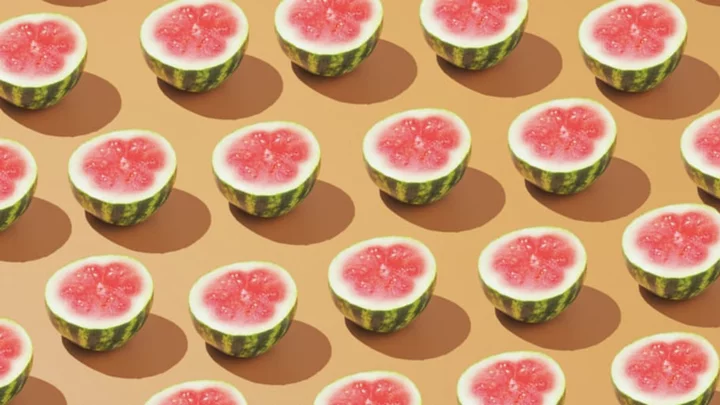
10 Refreshing Facts About Watermelon
Whether you think of watermelon as a fruit or a vegetable, you’re correct. Discover more fun facts about watermelons here.
2023-07-19 03:15
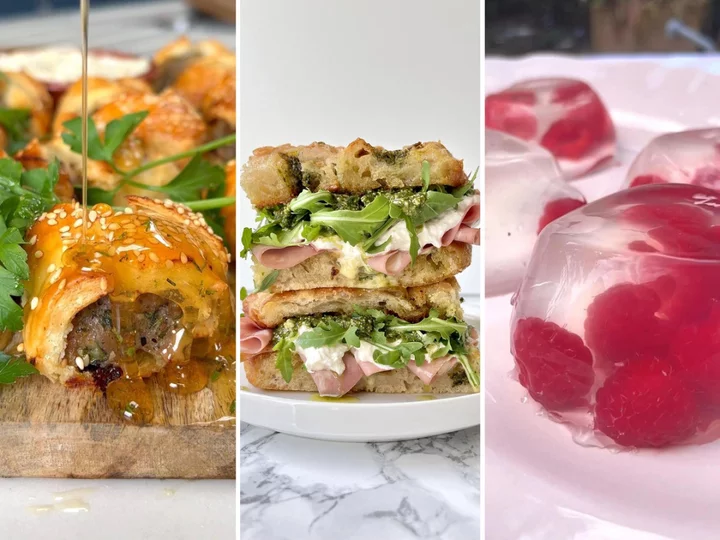
3 TikTok-approved recipes for picnic season
Grab your baskets and your blankets because it’s National Picnic Month (AKA it’s summer guys, just get out there). Nothing says dining al fresco in Britain than a sausage roll, but the recipe for honey and mustard sausage rolls below is so incredibly good you’ll want to make them all the time. The same goes for sandwiches, as long as they’re not soggy. Sometimes you dream about sandwiches, hoping they’ll be as delicious as you dreamed. Well, the mortadella, pesto, burrata focaccia sandwich with garlic confit aioli one below is. It has crisp pesto focaccia, pesto, burrata, mortadella, rocket and a homemade garlic confit aioli. Don’t forget dessert! These elderflower and raspberry jellies are so easy to make, transport and, most importantly, devour. Honey and mustard sausage rolls These honey and mustard sausage rolls are so incredibly good you’ll want to make them all the time. We’re using Asda’s Extra Special Orange Blossom Honey sourced from bees that feed on orange blossom in Spain and Mexico giving it a sweet citrus scent. Stirred into the filling and mixed with some fresh thyme to drizzle over the hot pastry when they come out of the oven. Just heaven! Serves: 6-8 Prep time: 35 minutes | Cook time: 25-30 minutes Ingredients: For the filling: 1 pack of Asda’s Extra Special Cumberland Sausages 1 heaped tbsp grainy mustard 1 tbsp Asda Honey Blossom Honey 2 tbsp chopped parsley Salt and pepper 1 sheet ready rolled puff pastry 1 egg, beaten Sprinkle of sesame seeds For the drizzle: 5 sprigs of thyme, leaves only 1 tbsp honey For the dip: 3 tbsp mayonnaise 1 tbsp grainy mustard Method: Preheat the oven to 200C. Line a baking tray with parchment. Remove the sausages from their skins and place the sausage meat in a bowl. Add the mustard, honey, parsley and season well. Stir to combine. Place the pastry on a board and cut in half lengthways. Divide the pork mixture in two. Place one portion of the meat on the long edge of one piece of pastry and shape into a sausage roll shape, pinching the seam and rolling it over so the seam is underneath. Repeat with the other roll. Brush with some beaten egg. Slice into portions and scatter with sesame seeds. Place on a baking tray and bake for 25-30 mins until golden and cooked through. For the drizzle, heat the honey gently in a pan for a minute and add the chopped thyme. Drizzle over the hot sausage rolls just before serving and serve with the mustard mayo dip. Enjoy! Mortadella, pesto, burrata focaccia sandwich with garlic confit aioli Sometimes you dream about sandwiches, hoping they’ll be as delicious as you dreamed. Well, this one is. It has crisp pesto focaccia, pesto, burrata, mortadella, rocket and a homemade garlic confit aioli. Serves: 1 Prep time: 15 minutes Ingredients: For the garlic confit aioli: 10 garlic confit cloves 1 cup garlic confit olive oil 1 tbsp lemon juice 1 egg Pinch of flakey sea salt For the sandwich: 2 slices pesto focaccia 1 x burrata 4 tbsp green basil pesto 75g Italian mortadella 25g wild rocket Method: Make the garlic confit aioli: Place all ingredients into a glass container or jug that is just wide enough to fit a hand blender. Blend all ingredients together while slowly incorporating all of the oil. Continue until you have a thick consistency. Store in an airtight container or jar in the fridge for up to 3 days. Assemble the sandwich: Cut your focaccia into thirds lengthways. Slice 1 piece of the focaccia in half. Drizzle cut side with olive oil and toast in a pan until golden. Assemble your sandwich by beginning with a layer of the garlic aioli, a spoon of pesto, followed by slices of the mortadella, burrata, torn in two, and rocket, finished with a pinch of salt and pepper. Top with the other half of the focaccia and cut in half. Enjoy! Elderflower and raspberry jellies These elderflower and raspberry jellies were always on the menu when I catered for parties and people always chose them. They were so popular, and they’re so easy to make. Serves: 6 Prep time: 15 minutes | Cooling time: 4 hours overnight Ingredients: 8 sheets leaf gelatin 350ml elderflower cordial 1 punnet raspberries Cream or ice cream (to serve) Method: Soak the gelatin in cold water for a few minutes, then drain. Pour 100ml of boiling water over the gelatin and stir to fully dissolve. Allow to cool for a couple of minutes, then stir in the elderflower cordial and 250ml of cold water. (I always wet the inside of the jelly mould if I’m planning on turning the jellies out afterwards before I add the jelly mixture). Divide the raspberries into glasses or ramekins or a large glass bowl and pour over the liquid. Cover and put in the fridge to set for at least 4 hours-it works best if left overnight. (If you want the berries to be suspended in the jellies, pour a third of the mixture into the moulds and set in the fridge, then add the berries so they lie on top of the set layer and pour over the remaining mixture). To remove from the mould, if using, dip the bottom briefly into a bowl of hot water, cover with a slightly larger plate and with one confident movement, invert the mould so that the jelly lands neatly onto the plate. Serve the jelly with cream or ice cream. Read More The dish that defines me: Alex Outhwaite’s Vietnamese bun cha It’s easier to make baklava at home than you might think Get set for Wimbledon with top pastry chef’s strawberry recipes Pinch of Nom: Healthy eating doesn’t have to cost the earth ‘Deliciously indulgent’ one-pot chilli mac and cheese Can’t decide between a cookie or a brownie? Now you don’t have to
2023-07-18 13:59

Higher food prices and more hunger: Collapse of Black Sea grain deal poses a massive threat
Wheat and corn prices on global commodities markets jumped Monday after Russia pulled out of a crucial deal allowing the export of grain from Ukraine.
2023-07-17 22:22

Beware the Ron DeSantis Deepfakes, No Matter How Funny They Are
Did Ron DeSantis really say, "mmm, hungwy?" No.
2023-07-17 20:52

The dish that defines me: Alex Outhwaite’s Vietnamese bun cha
Defining Dishes is a new IndyEats column that explores the significance of food at key moments in our lives. From recipes that have been passed down for generations, to flavours that hold a special place in our hearts, food shapes every part of our lives in ways we might not have ever imagined. I got my first job in Hanoi as an EFL (English as a Foreign Language) teacher and taught a kindergarten class at the weekends. The school had a mix of Vietnamese and other EFL teachers, so I was able to make a lot of really great friends who were very keen to educate all of us foreigners on the best local food. On my first day at the school, they took me to a bun cha stall nearby that was really, really popular and it was always full. They served it with strips of pork belly, which is uncommon. Quite often, you’d have to wait a little while to get a seat, but it was always worth it. Once, I saw a bride and groom dining there in their wedding outfits! My favourite thing about bun cha is the smell of smoky meat coming off the open-air grill. It would fill the air around you while you sat and waited for your food to arrive. That delicious smell is what I miss the most when I try to make it for myself in the UK but it’s really hard to recreate indoors. The way my Vietnamese friends taught me to eat it was to pour the nuoc cham – a sauce made from fish sauce, sugar, lime juice and water – all over the dish and mix it all up, but I know other people just dip the meat in it. I’m sure there’s no one correct or incorrect way to do it, but the sauce is so delicious, why wouldn’t you want to soak the whole thing in it? I spent one year in Hanoi and moved back to my parent’s house in York, where I grew up, in 2011. By this time, I’d done a few embarrassing TV adverts and little acting jobs in Hanoi, and I went on to do quite a lot of presenting work on little local channels and corporate videos. Then I came across a Sainsbury’s magazine, I think, that was running a competition by the British Herb Association, which I’d never heard of before. They were looking for people to cook a recipe using British-grown herbs. I decided to try making a bun cha at home by adapting a recipe by New Zealand-born US chef Bobby Chin. I’m sure I butchered it and Anglicised it (all those terrible things) because I’d never made it before. But I did use some fresh British herbs, coriander and mint that my parents grew in their garden, which was quite sweet. I filmed myself making it and submitted it for the competition, and in the end, I was invited to take part in the final. I’d really like to highlight that I am not a chef. I like my food and I enjoy cooking, but I’ve never pretended to be a chef. Anyway, I went to London and participated in the cook-off against two other ladies and was judged by Masterchef’s John Torode. Of course I’d seen him on TV quite a lot – he was fairly intimidating, to be honest. He was very friendly off-camera, but he plays a part when they’re rolling. I remember he came up to me and said: “Oh, you obviously much prefer cooking in your own home than in a professional kitchen.” I said: “Well, yes, I’m not a professional.” He was very complimentary about my dish, although he did highlight that there was a lack of smokiness in the meat, which was a very fair point. But I won the competition somehow and that’s how it linked me to getting my first proper TV presenting gig. I saw an advert for a TV channel in Mumbai that was searching for a presenter who could also cook, so I sent off my details and a video of me making bun cha in the competition. A couple of days later, they got in touch with me and seemed quite pleased by my enthusiasm. I was flown out to Delhi just two weeks later. It seemed too good to be true, but I started presenting on a show called Quest, which was initially only broadcast in Mumbai on Travelxp. It’s now an international channel that broadcasts in about 30 countries. The show had me visiting chefs and families around India and learning about “forgotten dishes” that people were rediscovering and cooking. It was an incredible opportunity and I feel very fortunate to be able to do what I do. Maybe I should be thanking Sainsbury’s magazine. But it’s bun cha and Hanoi that I have the most love for. When I make it now, I have this image in my mind of the place that I would go with my teacher friends and I’m doing my very best to emulate that flavour. I’m sure if I went back now and tried the authentic version again, I’d think: “God, I’m just butchering it.” But you know, I’m doing my best. Alex Outhwaite is a travel TV presenter. She has hosted several travel shows, including ‘The Wanderer’ on Prime Video. Read More It’s easier to make baklava at home than you might think Get set for Wimbledon with top pastry chef’s strawberry recipes Pinch of Nom: Healthy eating doesn’t have to cost the earth
2023-07-17 13:57

EU lifts curbs on food imports from Fukushima area as Japan set to release nuclear water into sea
The European Union has lifted all import restrictions on food, including fish, produced near the Fukushima nuclear plant in Japan just as Tokyo prepares to release treated radioactive wastewater into the ocean.
2023-07-14 19:20
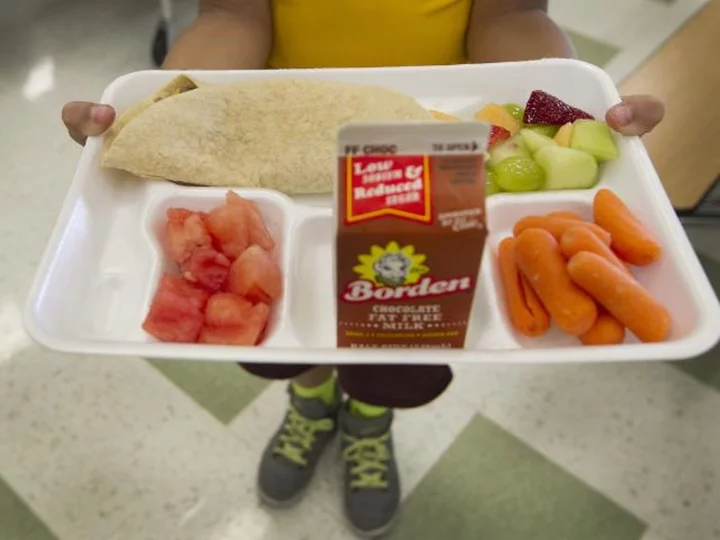
Nearly 5 million kids might miss out on food assistance if these states don't act by Friday
Nearly 5 million children in eight states could lose out on some extra funds for food unless their state officials sign up for a federal relief program by Friday.
2023-07-14 05:15
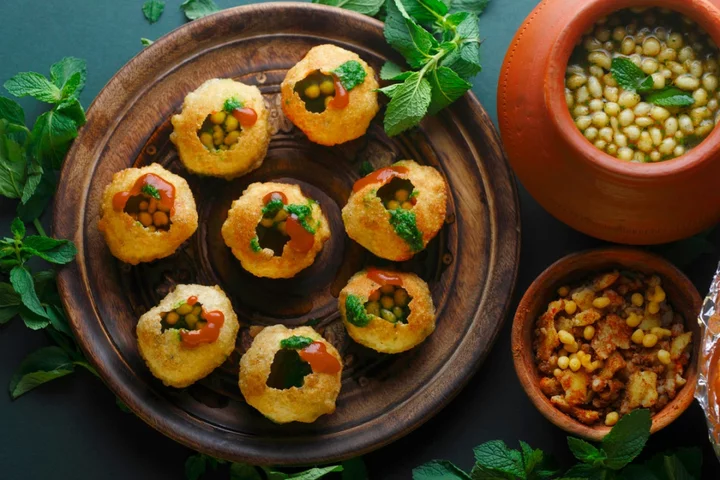
What are pani puri? The much-loved Indian street snack known by different names across the country
Today’s Google Doodle celebrates one of India’s most famous street food snacks – the bite-sized pani puri. The dish is one of India’s most popular street foods and can incorporate many different flavours depending on the ingredients used and where in the country it is being made. The popular snack consists of a crispy, deep-fried shell that is cracked open on one side and stuffed with any combination of potatoes, chickpeas, spices or chillies dunked in flavoured water. The tiny snack is best eaten quickly in rounds, with customers dipping the shell into the water and popping it whole into their mouths before the next shell is offered. The sweet and savoury dish goes by different names in different parts of India. In capital Delhi, it is known as gol gappa, while in West Bengal, Bihar and Nepal, the snack is called phuchka. In southwestern Maharashtra, it is known by the staple pani puri, while in northern Haryana state, it is called paani patashi. In central Madhya Pradesh, the snack goes by fulki and in Uttar Pradesh, it’s called pani ke batashe or padake. In the northeastern state of Assam, locals call it the phuska, while Gujaratis call it pakodi. In parts of Odisha, Andhra Pradesh, Jharkhand and Chhattisgarh, locals call the snack Gup-chup. The process of making the humble pani puri is simple and the filling can be made according to the preference of the person eating it. The options usually consist of a potato stuffing, mashed chickpeas stuffing, boondi or tiny fried gram flour balls. A hot ragda stuffing can also be used, which is a curry or gravy preparation made from dried white peas, spices and seasonings. The server pokes a hole in the deep-drief hollow shell called the puri and fills the stuffing in it. The flavoured water, or pani in Hindi, used to dunk the filling is made either of tamarind, asafoetida, mint, garlic, lemon or jaljeera – a type of flavoured water made with chilli, cumin (jeera) and water (jal, which is another word for water) – and is served to customers one by one. One plate of pani puri usually consists of six to eight bites and costs between Rs 20-40 (£0.20-£0.40). The staple Indian snack is available in almost every north Indian restaurant locally and has only grown in popularity abroad. London’s high end Indian restaurants, like Dishoom, Roti Chai, Indian Accent and Gunpowder, also serve the dish. The snack is best enjoyed when the flavoured water is served cold. Today’s Google Doodle features a bespoke video game in which players “serve” customers’ orders for pani puri with different fillings. Google said 12 July marked the anniversary of a World Record set in 2015 for the most flavours of pani puri offered by one restaurant. It was claimed by eatery Indori Zayka in Indore, Madhya Pradesh. Read More How to shop at Borough Market in the summer ‘We call them Picky Bits’: Nigella Lawson responds to viral ‘Girl Dinner’ trend Get set for Wimbledon with these strawberry recipes Google Doodle celebrates pani puri, the much-loved Indian street snack Indian food influencer’s digestive mocktail recipe mocked online Ali Ahmed Aslam, chicken tikka masala ‘inventor’, dies at age 77
2023-07-13 15:57
